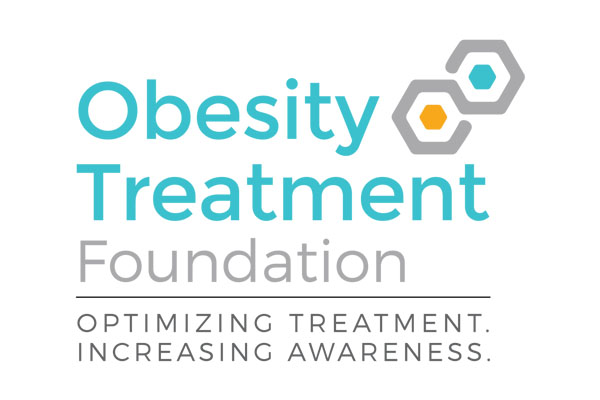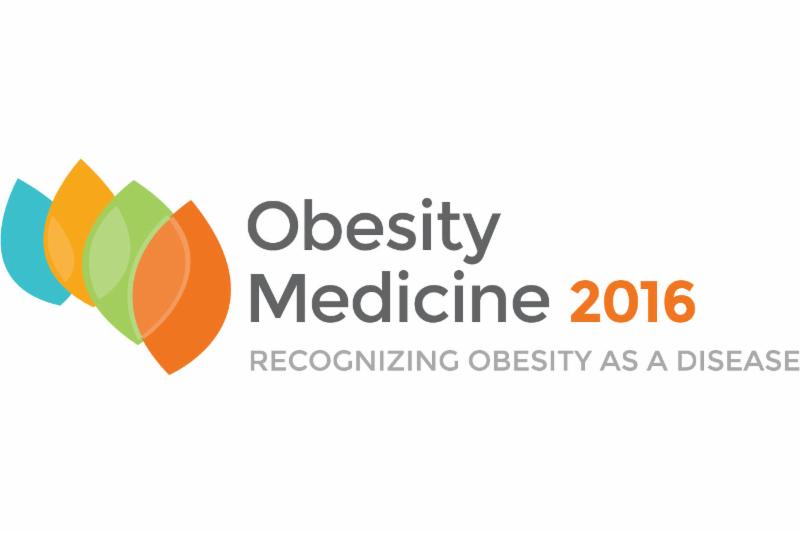 OMAcademy will take obesity medicine education online
Starting in April, our recorded CME/CE material will be available to watch online through OMAcademy, our new online learning portal. OMAcademy is on-demand education, so you can learn about obesity medicine at your convenience. Watch recorded presentations any time, save them in your library, earn CME/CE credit right away, and keep track of your credits in your OMAcademy profile. We're debuting OMAcademy at Obesity Medicine 2016 in San Francisco, where we'll demo the portal and show you how to use it. Obesity Medicine 2016 attendees will receive all the recordings from the conference for free on OMAcademy, and members will always get discounted prices on other recorded CME/CE presentations! |
Connect with your colleagues at Obesity Medicine 2016
In addition to our top-rated educational sessions about obesity medicine, Obesity Medicine 2016 offers invaluable opportunities to meet and connect with other like-minded individuals and learn from their experiences. We're offering numerous networking opportunities throughout the conference -- make sure you take advantage of these opportunities and make the most of your conference experience. Mentor/mentee program: Get paired with a mentor and arrange meetings with them throughout the conference. Your mentor can answer your questions, give advice, and provide support during and after the conference. Or, if you're an experienced clinician, become a mentor to someone and guide them as they enter the field. Dine-arounds: Back by popular demand, dine-arounds are an opportunity for you to go to dinner with other attendees at restaurants near the hotel. We make your reservation so you can spend the evening discussing topics related to obesity medicine or just making conversation with new friends. Networking breaks and receptions: Throughout the conference, there will be plenty of time between sessions and at the end of the day to get to know your colleagues better. Use your downtime to strike up a conversation with another attendee or one of the speakers.
|
Download or order patient resources from OAC
We are your primary source for materials and information about practicing obesity medicine, but where can you find materials to help your patients understand obesity? The Obesity Action Coalition (OAC) is a patient-focused organization dedicated to helping individuals with obesity along their journey toward better health. OAC offers a variety of free brochures and guides written for patients to help them understand the options for improving their health.
|
Obesity Treatment Foundation
|

Donor appreciation event to be held at Obesity Medicine 2016
Have you given to the Obesity Treatment Foundation (OTF) in the past? If so, we thank you for your support and invite you to attend an early evening reception on April 9 in San Francisco. During the reception, we will update you about what we've been working on and give you an opportunity to network with fellow donors. This event is reserved for those who generously supported OTF in the past. If you donated, we look forward to seeing you on April 9. If you have not yet given to the foundation, make a donation before March 20 to get your name on the invite list. |
 |
Hunger: The carrot and the stick
Sternson, S. M. Molecular Metabolism, 2016.
This commentary article focuses on the neurobiology of appetite and how the Agouti-related protein (AGRP) may mediate this homeostatic system. Feeding is driven by a homeostatic energy deficit and non-homeostatic reward and likely by other appetite systems as well. The effect of the AGRP neurons in driving appetite becomes apparent during obesity treatments that include a low-energy diet. The author suggests that a variety of systems mediate appetite regulation by both the "carrot and the stick," where the positive hedonic system (the carrot) pulls an animal toward incentives, and in the negative system (the stick), the AGRP neurons push an animal to attend to physiological needs. Both positive and negative systems are homeostatically sensitive, but the positive "carrot" system also operates in the absence of physiologic need if the reward value of the food is high enough. This article highlights the need to consider contributions from multiple systems when tailoring strategies for controlling appetite and treating obesity. View article
|
Brown fat and browning for the treatment of obesity and related metabolic disorders
Kim, S. H., and Plutzky, J. Diabetes and Metabolism Journal, 2016.
Brown adipose tissue (BAT) and browning of white adipose tissue (WAT) have arisen as a potentially important, efficient strategy to treat obesity and its related metabolic disorders. The idea behind this strategy is by increasing the amount and/or activity of theromogenesis, as is seen with BAT, there will be a negative energy balance due to the increased energy expenditure. Browning WAT can be achieved by prolonged cold exposure, exercise, beta adrenergic agonists, and endocrine factors such as fibroblast growth factor 21, cardiac natriuretic peptides, retinaldehyde, and bone morphongenetic proteins. These stimuli can result in adipose tissue with high mitochondria content and increased UCP1 expression. This review article suggests that findings about BAT in mice can be reproduced in human studies, making brown fat a potential organ to consider when treating obesity. View article
|
|
|
|
Executive Director
Sponsorships and Exhibits Manager
Operations Manager
Education Coordinator
Communication Manager
Executive Director of the Obesity Treatment Foundation
|
|
101 University Blvd.,
Suite 330
Denver, CO 80206
|
|
|
Obesity and brain inflammation: A focus on multiple sclerosis
Palavra, F., et al. Obesity Reviews, 2016.
Chronic inflammation is a common denominator in obesity and multiple sclerosis (MS). This article reviews existing data and establishes a relationship between obesity and MS beyond an epidemiological link. The authors suggest that many physiological events that occur with obesity may be contribute to MS, such as: immune system overactivation with adipose tissue dysfunction; activation of neuro-inflammatory processes that occur from chronic low-grade activation of systemic inflammatory pathways in obesity; and neuro-inflammation, autonomic dysfunction, endothelial dysfunction, and demyelination in MS as a result of obesity-induced inflammation. The authors conclude that new research needs to clarify the possible contact points between obesity and MS, not only for risk of disease development, but also to understand clinical deterioration and response to therapy to improve quality of life for people affected by these diseases. View article
|
 |

This spring, we're headed to lively San Francisco for Obesity Medicine 2016, your leading resource for certification exam review and the premiere source of education about managing an obesity medicine clinic, nutrition, and the comprehensive approach to obesity treatment. Earn up to 30.5 CME/CE and attend the courses that most interest you!* While you're there, don't miss all that San Francisco has to offer. Take a trip to Alcatraz for a taste of history, walk along the waterfront or the Golden Gate Bridge, or visit one of the city's many cultural districts. |
Review Course for the ABOM Exam
13.25 CME/CE | April 6-7
Helps prepare those planning to take the American Board of Obesity Medicine (ABOM) certification exam.
| Practice Management Essentials
6.5 CME/CE | April 6
Explains the best business practices for running an obesity medicine clinic, from setting up a practice to boosting patient retention.
|
|
Nutrition Course
6.75 CME/CE | April 7
Outlines the latest evidence-based findings about nutrition and helps you select appropriate nutrition plans for your patients.
| Spring Obesity Summit
17.25 CME/CE | April 8-10
Addresses topics related to current and emerging research, evidence-based treatment approaches, technologies, and practical methods used by obesity medicine clinicians.
|
|
|
*The Review Course for the ABOM Exam runs concurrently with Practice Management Essentials on Wednesday and the Nutrition Course on Thursday. Registration for the Review Course includes two days of class time, and switching between courses is not allowed.
|
 There's only one Obesity Medicine Basics courses left this winter. Don't miss your opportunity to either attend this introductory-level course or refer a colleague to attend and earn a $50 Amazon gift card*. Obesity Medicine Basics is worth up to 7 CME/CE hours and provides introductory-level training about the evaluation and treatment of patients affected by obesity. Learn more about this course. Course dates and cities:*For every person you refer who attends an Obesity Medicine Basics course in any city and lists you as the person who referred them, you'll earn a $50 Amazon gift card. |
|
|
|
The Obesity Medicine Association and the Obesity Treatment Foundation thank our 2016 Corporate Advisory Council members for their continuous support.
|
© 2016 Obesity Medicine Association. All rights reserved. Materials may not be reproduced, redistributed or translated without written permission. Advertising disclaimer: Under a policy approved by the OMA executive committee and exhibitor/advertiser review committee, commercial companies may apply to advertise in OMA publications. Approval does not imply endorsement or official recognition of particular products or services.
|
|
|
|